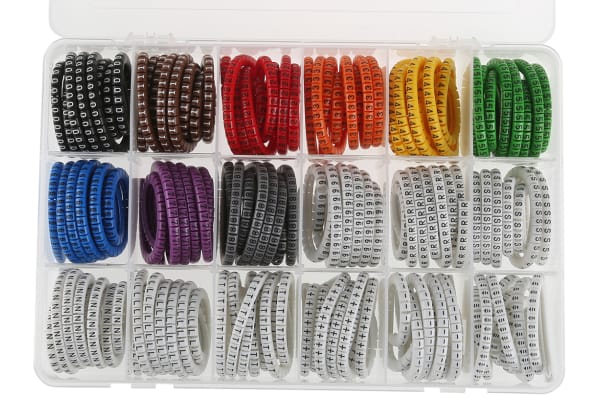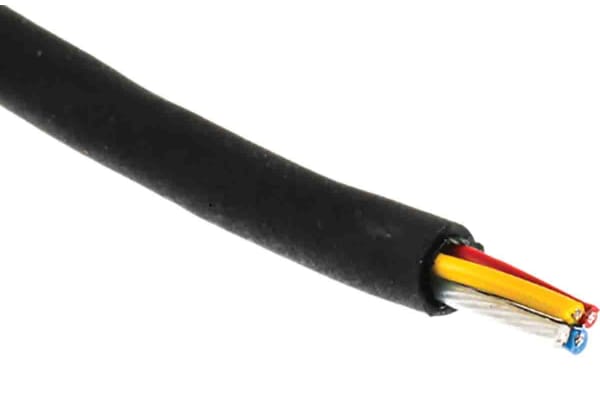- Published 28 Jan 2025
- Last Modified 28 Jan 2025
- 10 min
Getting to Know XLR Cables: Functions and Applications
Learn how XLR cables minimise noise in music recording and playback using balanced audio signals and how they provide strong, reliable cable connections.
What is an XLR Cable?
Reviewed by Jay Proctor, Technical Support Team Leader (November 2024)
An XLR cable or XLR lead is a type of audio cable known for its three-pin connector used in professional audio equipment. It's designed to carry balanced audio signals, reducing noise and interference over long distances. XLR cables are commonly used for microphones, speakers, and other audio devices due to their reliable connection and durability. They can also be adapted with XLR to jack cables for connecting to devices with 1/4-inch XLR jacks. XLR cables are essential in recording studios, live sound setups, and broadcast environments, facilitating clear and high-quality audio transmission.
Exploring Types of XLR Connectors
Each type of XLR connector plays a crucial role in ensuring robust and interference-free audio connections. They are integral components in XLR cables, widely recognised for their greater noise rejection capabilities and secure locking mechanism, making them indispensable in professional audio environments where signal integrity and reliability are paramount. Following are the types of XLR connectors being used actively in today’s market:
- XLR-3: This standard XLR connector is universal in professional audio settings due to its ability to carry balanced audio signals effectively. It consists of three pins: one for the ground (shield), one for the positive signal (hot), and one for the negative signal (cold). XLR-3 connectors are known for their durability and secure locking mechanism, ensuring stable connections even in high-stress environments such as stage performances or studio recordings. They are essential components in microphone cables (also referred to as XLR cables) and are compatible with various audio devices via adapters like XLR to jack cables, facilitating connectivity with equipment featuring 1/4-inch jacks.
- XLR-5: This variant of the XLR connector includes five pins and is primarily used in specialised applications where more channels or additional control signals are necessary. It is commonly found in certain types of lighting equipment, intercom systems, and some audio devices that require multiple channels of communication or control. XLR-5 connectors provide versatility in setups that demand more complex signal routing or integration across different systems, ensuring efficient and reliable transmission of audio and control signals.
- XLR-7, XLR-8, XLR-9: These multi-pin XLR connectors cater to even more specialised needs in audio and industrial applications. They offer configurations with seven, eight, or nine pins respectively, accommodating scenarios requiring extensive channel separation, control signals, or data transmission capabilities. These connectors are less common but serve critical roles in environments such as multi-channel audio systems, complex broadcast setups, and industrial control systems where precise signal routing and reliability are paramount.
Integrating XLR Ports in Electronic Equipment
Integrating XLR ports into electronic equipment involves several key steps to ensure proper functionality and compatibility with audio devices. Here’s a structured approach to integrating XLR ports:
- Define Requirements: Determine the specific application and requirements for the XLR ports. Consider factors such as the number of ports needed, whether they will transmit audio signals, control signals, or both, and the desired pin configuration (e.g., XLR-3, XLR-5).
- Circuit Design: Design the circuitry around the XLR ports, ensuring compatibility with balanced audio signals if transmitting audio. Incorporate components such as transformers, line drivers, and ground lift switches as needed to maintain signal integrity and reduce noise interference.
- PCB Layout: Create a PCB layout that accommodates the physical dimensions and pin configurations of the chosen XLR connectors. Ensure adequate spacing between ports to prevent crosstalk and interference. Implement grounding techniques to minimise ground loops and ensure proper shielding for optimal signal quality.
- Mechanical Integration: Select suitable XLR connectors that match the design requirements in terms of durability, locking mechanism, and ease of connection. Ensure the connectors are securely mounted on the enclosure or panel, providing a robust interface for external connections.
- Testing and Validation: Conduct thorough testing of the integrated XLR ports to verify functionality, signal integrity, and compatibility with audio equipment. Test for proper grounding, noise levels, and signal continuity across all pins. Use test equipment such as oscilloscopes, signal generators, and audio analysers to validate performance.
- Documentation and Compliance: Document the integration process, including circuit schematics, PCB layouts, and assembly instructions. Ensure compliance with relevant industry standards and specifications for audio interfaces and connectors (e.g., AES standards for audio equipment).
- User Interface and Accessibility: Consider user interface aspects such as labelling and accessibility of XLR ports on the device or panel. Ensure clear labelling of input and output ports to facilitate ease of use and troubleshooting.
Utilising XLR Leads in Audio Design
Utilising XLR leads in audio design involves leveraging their unique characteristics and capabilities to ensure high-quality and reliable audio transmission. Here’s a detailed exploration of how XLR cables are utilised in audio design:
- Balanced Audio Transmission: XLR audio cables are primarily used for balanced audio transmission, which helps in reducing noise and interference over long cable runs. They are essential for connecting microphones, instruments, and other audio sources to mixers, amplifiers, and recording equipment in professional audio settings.
- Signal Integrity: XLR cables maintain signal integrity by using three conductors: one for the positive signal (hot), one for the inverted signal (cold), and one for the ground. This balanced configuration allows for the rejection of common-mode noise, ensuring clean and clear audio signals even in environments with electromagnetic interference (EMI).
- Robust Construction: XLR cables are known for their robust construction, featuring sturdy connectors with a locking mechanism that provides secure connections. This reliability is crucial in live sound applications where equipment connections are frequently handled and moved.
- Versatility: XLR cables come in various lengths and configurations, including different pin counts (e.g., XLR-3, XLR-5) to accommodate different audio setups and equipment requirements. They can also be adapted using XLR to jack cables or other adapters to interface with equipment featuring different types of connectors.
- Professional Audio Applications: XLR cables are widely used in recording studios, live sound reinforcement, broadcast studios, theatres, and concerts. They facilitate the transmission of high-fidelity audio signals with minimal noise, making them indispensable in environments where audio quality and reliability are critical.
- Integration with Audio Equipment: When designing audio systems, integrating XLR cables and XLR jacks involves careful consideration of circuit design, PCB layout, and mechanical integration to ensure optimal performance and compatibility with audio equipment. This includes selecting appropriate connectors, implementing proper grounding and shielding techniques, and conducting thorough testing to verify signal integrity.
- Maintenance and Durability: Proper maintenance of XLR cables involves periodic inspection for wear and tear, ensuring connectors are clean and securely connected. Regular testing with audio analysers or similar equipment helps maintain peak performance and detect potential issues early.

Applications of XLR Cables
XLR cables are versatile tools in audio and communication applications, known for their reliability, noise rejection, and ability to maintain high-quality audio signals across various professional and industrial settings. Here are some important applications served by XLR cables:
- Audio Production: XLR wires are extensively used in audio production environments such as recording studios, live sound reinforcement, and broadcast facilities. They connect microphones, instruments, stereo equipment using XLR stereo cables and other audio equipment to mixing consoles, amplifiers, and recording devices.
- Live Events: In live events such as concerts, conferences, and theatre productions, XLR wires facilitate the connection of microphones, speakers, and audio sources to ensure clear and reliable sound reinforcement throughout the venue.
- Broadcasting: XLR wires are crucial in broadcasting for connecting microphones via microphone cable jacks, audio interfaces, and equipment in radio stations, television studios, and OB vans. They help deliver high-quality audio signals for live broadcasts and recordings.
- Public Address Systems: XLR wires are used in public address systems for connecting microphones and speakers in venues such as stadiums, auditoriums, and houses of worship, ensuring effective communication and sound distribution.
- Professional Audio Equipment: XLR wires are integral to professional audio equipment such as mixers, amplifiers, and signal processors. They enable balanced audio connections that minimise noise and interference, ensuring optimal performance and sound quality.
- Recording Studios: XLR wires play a crucial role in recording studios by connecting microphones, monitors, and audio interfaces to recording consoles and digital audio workstations (DAWs), facilitating the capture and processing of high-fidelity audio recordings.
- Instrumentation and Measurement: XLR wires are used in scientific and industrial settings for connecting sensors, data acquisition systems, and measurement devices. They provide reliable transmission of signals in environments requiring precision and low noise interference.
- Intercom Systems: XLR wires are employed in intercom systems for communication in theatres, broadcast facilities, and event production. They connect intercom stations and headsets, ensuring clear and reliable communication among production teams.
Factors to Consider for XLR Cable Selection
When selecting XLR cables, the following factors should be considered to ensure optimal performance and reliability:
- Cable Length: Choose the appropriate cable length based on the distance between audio devices. Longer cables can introduce signal degradation, so selecting the shortest length that meets the need is ideal to minimise loss.
- Cable Type: Consider the type of cable required for an application. XLR cables are available in various types, including standard microphone cables, speaker cables, and multi-pair cables for complex audio setups. Ensure the cable type matches the intended use to maintain signal integrity.
- Wire Gauge: The wire gauge (thickness) of the cable affects its ability to carry current and signal over distance. Thicker wires (lower gauge numbers) reduce resistance and signal loss, making them suitable for longer cable runs and high-power applications.
- Shielding: Pay attention to the shielding of the cable, which protects against electromagnetic interference (EMI) and radio frequency interference (RFI). Choose cables with adequate shielding for environments prone to electrical noise, such as live stages or near power sources.
- Connector Quality: Consider the quality of the XLR connectors on the cable. High-quality connectors with robust construction and a secure locking mechanism ensure reliable connections and durability, especially in demanding professional environments.
- Flexibility and Durability: Evaluate the flexibility and durability of the cable. Flexible cables are easier to route and manage, while durable construction (such as rugged outer jackets and strain relief) ensures longevity and resistance to wear and tear.
- Application Specificity: Tailor the cable selection to the specific application and environment. For example, choose weather-resistant cables for outdoor events or cables with high-temperature ratings for use near heat sources.
- Budget and Quality Balance: Balance budget with the desired quality and performance of the cable. While high-quality cables may be more expensive upfront, they offer better signal transmission and longevity, potentially saving costs in the long run by reducing maintenance and replacement needs.
Conclusion
In conclusion, understanding XLR cables and their versatile applications is essential for anyone involved in audio engineering and professional sound systems. From their balanced design that minimises noise interference to their robust connectors and wide compatibility with various audio equipment, XLR cables play a crucial role in ensuring high-quality audio transmission. Whether used in recording studios, live events, broadcast environments, or industrial settings, XLR cables provide reliable connectivity and superior signal integrity. Their ability to handle both analogue and digital audio signals makes them indispensable tools for achieving clear and consistent sound reproduction. By selecting the right type and quality of XLR cables suited to specific needs, professionals can enhance performance and reliability across diverse audio applications.



